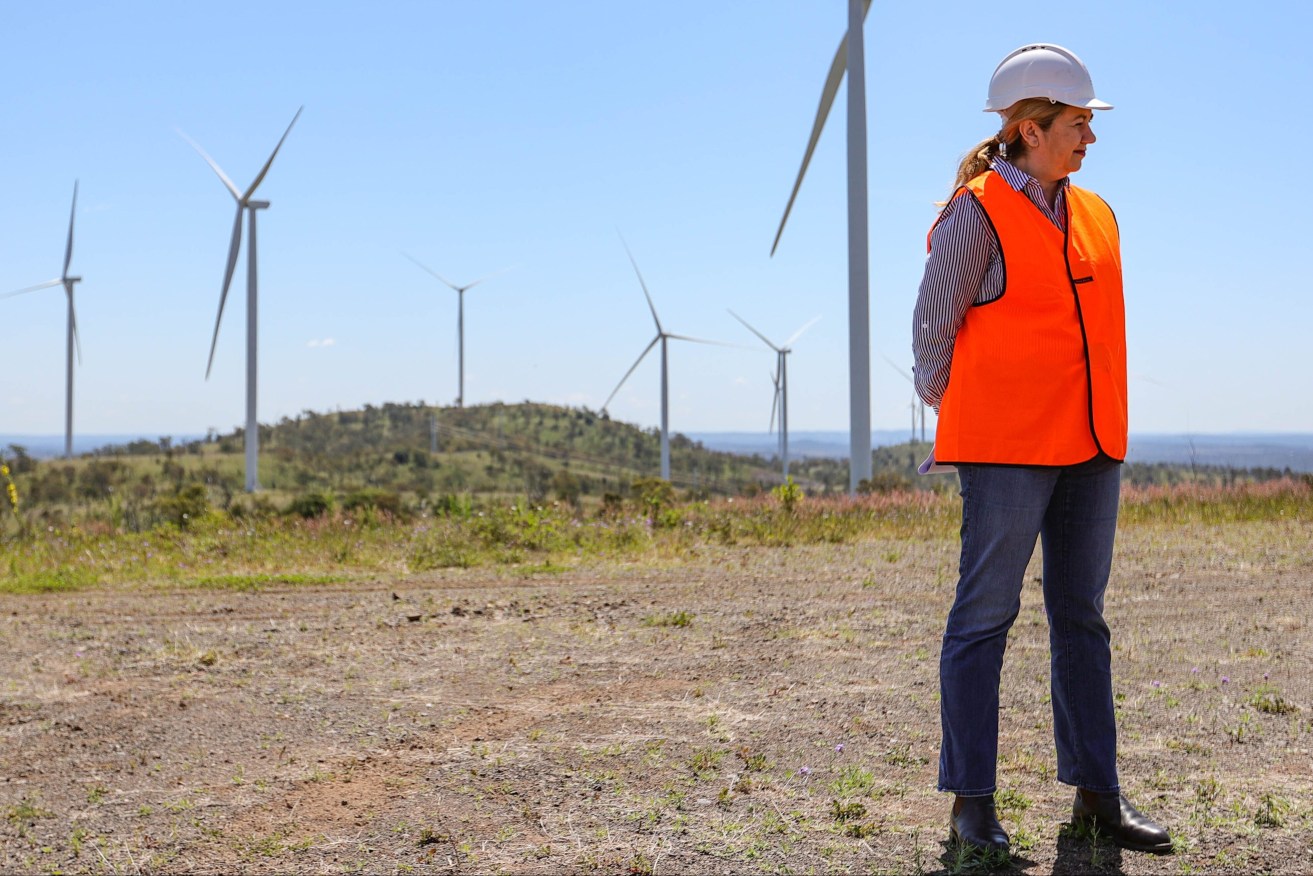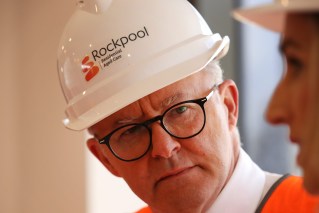Why Australia should stop talking up nuclear’s role in $9 trillion energy challenge
Everything but nuclear energy should be thrown at the challenge of reaching net zero emissions, a scheme that would cost as much as $9 trillion by 2060, a report co-authored by the University of Queensland has found.


Queensland Premier Annastacia Palaszczuk at a wind farm in the South Burnett district (AAP Image/Russell Freeman)
The report found that Australian would need to triple the power capacity of its current market by 2030 to be on track to reach net zero by 2050.
That would require a “rapid rollout of wind, solar, transmission, storage, electric vehicles and heat pumps as it replaces the coal fleet” of generators.
The report was compiled by Net Zero Australia which consists of UQ, the University of Melbourne, Princeton and the Nous Group.
University of Melbourne’s Professor Michael Brear said all viable options to transform the energy network were needed, including carbon storage and a doubling of the current gas generation capacity.
“Our modelling finds there would be no role for nuclear energy unless costs fall by to around 30 per cent lower than current international best practice and renewable energy growth is constrained,” he said.
UQ’s associate professor Simon Smart said hydrogen could replace Australia’s reliance on fossil fuel exports and it could be done through large-scale carbon capture and storage.
“Exporting green metals, particularly iron and steel made in Australia using clean hydrogen has much lower abatement and infrastructure costs than for exporting clean hydrogen,” he said.
“Northern Australia (WA, Queensland and the NT) is particularly prospective for exports, but inland NSW and South Australia and offshore Victoria and Tasmania can also play roles.”
The report said decarbonising could create about 700,000 jobs, mainly in regional and rural Australia.
Queensland has its own energy transition plan costing which includes renewable energy zones, pumped hydro and a $5 billion electricity transmission prject between Townsville and Mt Isa. There were also several private sector hydrogen projects in early stages of development.
Energy generated by the Dulacca wind farm has also started entering the grid. Neon’s 400 MW solar farm, near Chinchilla, was also recently completed.
Princeton’s Dr Chris Greig said between $7 trillion and $9 trillion of capital would be needed to develop domestic and export energy and industrial infrastructure by 2060.
That was about six times the business-as-usual case.
“Additional investment will be needed by households and business to increase the efficiency of their heaters and vehicles, including by converting to heat pumps and electric vehicles,” he said.












